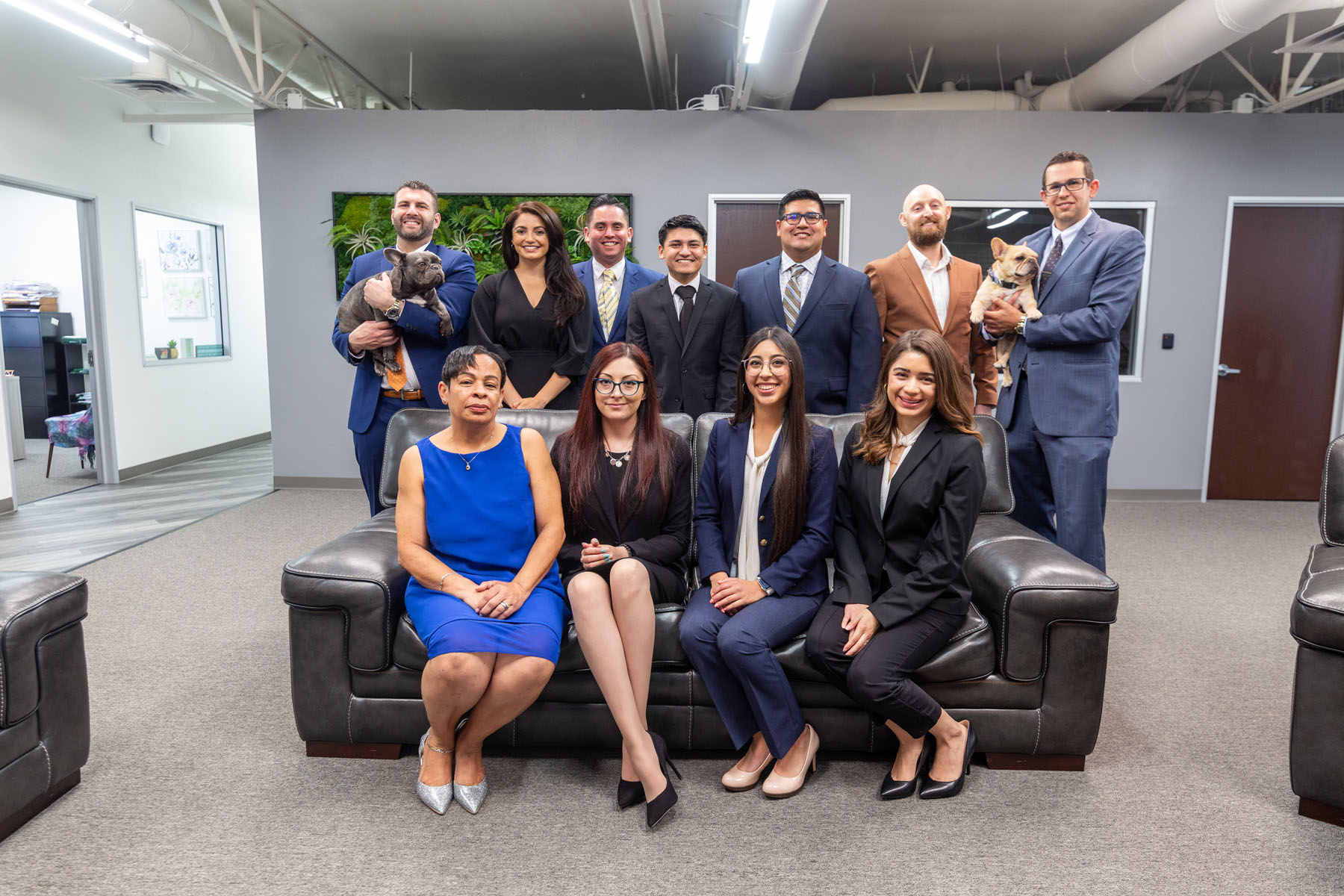Intersections are the source of some of the most complex choices drivers face on a regular basis. They feature a range of different layouts, and may have features that cause confusion and danger.
These issues are compounded by the unconventional situations that may arise at intersections, and the lack of understanding that many drivers experience when they meet these road features. For example, the flashing yellow light often confuses drivers, especially those new to the road, or unfamiliar with city and town driving.
As a result, accidents are unfortunately more common at intersections than in other areas of the road.
Your legal obligations and responsibilities at traffic signals and intersections may differ from state to state. This can cause further confusion if you are involved in an accident in an intersection. A professional and experienced lawyer can help you to break down the incident, dissect it, apply the law, and see if you have a case that deserves fair and just compensation.

The Prevalence of Intersection Accidents
According to the National Highway Traffic Safety Administration, over half of all intersection accidents take place at traffic signals, with nearly a third occuring at stop signs. On a related note, the NHTSA also claimed that starting in 2016, urban intersection fatalities started to outnumber those in rural areas.
Do not misinterpret these statistics to mean that intersection traffic lights and stop signs result in less safe driving conditions. Instead, consider that traffic signals indicate heavily used intersections, while stop signs are placed at crossroads with moderate or lighter amounts of vehicles traversing them. They prevent larger numbers of more serious accidents, but confusion about their use can sometimes serve as a contributing factor to collisions.
What the “Flashing Yellow Light” Means
A flashing yellow signal at an intersection could mean a variety of things. Drivers should remain aware of each potential meaning to safely operate their vehicle, and also to remain in full compliance with the traffic laws of their state.
In some cases, a traffic light flashes yellow temporarily. A power outage could have knocked out the traffic signals’ computer system, making it revert to a flashing yellow default setting. Some jurisdictions see heavy traffic during certain parts of the day, and minimal traffic during others. They will often move to a flashing yellow setting during periods of slow traffic.
Most of the time, however, traffic authorities assign a flashing yellow light to an intersection permanently. They do this often when an intersection has light to moderate traffic and when stop signs have proved insufficient.
Lack of knowledge of how to act in an intersection governed by yellow and red flashing lights is not a defense in the case an accident. It is up to drivers to learn about what the signal can mean, and to act accordingly.
Recommended Behavior When Approaching a Yellow Light Intersection
Traffic laws may be subject to change across different jurisdictions and over state lines. However, in many cases, the law remains the same nationwide.
In every jurisdiction’s traffic law, anywhere in the United States, a flashing yellow light means “slow down and proceed with caution.” Only stop at a yellow light if you see a direct blockage to your exit route from the intersection, or if you can see that proceeding would result in a collision.
A flashing red light indicates that each vehicle coming to the intersection must make a complete and full stop. The driver has the responsibility to halt, yield to traffic or pedestrians, and then proceed once the intersection has been cleared of obstacles.
What the Law Says About Negligence and Fault in Accidents at Intersections, or in other Auto Accidents
Hundreds of thousands of accidents take place at intersections every year. Odds are that at some point, you will experience an accident that involves an intersection. Unless the intersection is covered by a traffic camera, responsibility will be proved by an investigation involving witnesses, police statements, driver descriptions of events, and more.
If an injury occurred as a result of the accident, it could cost one or more parties tens of thousands, or even hundreds of thousands of dollars, in legal damages.
If the court finds an individual to have displayed a higher level of negligence than other parties, then that person will be found to be at fault. The level of fault will determine how much the person has to pay. Negligence and fault, however, will differ depending on the state, district, or territory.
What Role Does Negligence and Fault Play in Auto Accident Damages Claims?
When an accident results in injury, or in property damages that provoke the filing of a civil case, the law directs the court to decide the level of negligence for each party. Generally, this is outlined in the form of a percentage.
Let’s take a look at the differences in negligence-related law from state to state.
Contributory Versus Comparative Negligence
The laws of Virginia, North Carolina, Maryland, Alabama, and the District of Columbia prevent a driver from collecting damages if he or she is found to have contributed in any way to the accident. Known as “contributory negligence,” these laws prevent preclude these parties from any form of compensation.
Most other states have some form of comparative negligence legislation. These may take one of the following forms. While these forms differ in key details, all are focused on establishing a minimal standard of negligence required to collect compensation.
- Pure comparative negligence: All parties can collect varying levels of damages even if they are found to be partly at fault by the court.
- Modified comparative negligence: Parties in a vehicle accident cannot collect compensation if the level of fault exceeds a certain level. Most states set that level at either 50 percent or 51 percent.
- A handful of states do not adhere to percentages set by the court. Instead, any party whose level of fault is deemed to be more than “slight” is not permitted to receive compensation.
Laws establishing negligence in vehicular accidents differ from state to state, and may also reflect variables such as precedents set in case law. To navigate the sometimes tricky realm of civil cases and traffic law, you will need an experienced and capable attorney to represent your interests.

Proving Fault In a Car Accident Case
A lawyer has a number of tools at his or her disposal when trying to prove a case of driving negligence. The lawyer’s job involves proving the fault of other drivers, while proving that you had less responsibility for the collision, or none whatsoever.
Moreover, your lawyer must prove that specific acts of negligence contributed to the accident.
Even if you drove negligently, you still deserve a solid defense to ensure that you do not pay more than is fair. All good lawyers will strive to ensure that justice is done for all parties.
Using Police Reports or the Letter of the Law to Prove Negligence
In most cases, the issues of negligence and fault are not easy to discern. This is especially true when you experience an accident at an intersection.
Your lawyer will conduct, or order, an investigation into the accident to find the truth.
He or she will first look at police reports. Always resist the temptation to leave the police out of any traffic accident case. Their reports serve as some of the most important pieces of evidence in terms of driver conduct. Often, these reports will state explicitly who the officers believed was negligent and why.
Regardless of who is at fault, a police report serves as a powerful piece of evidence, especially if the officer issues a citation for breaking the law while driving.
In almost every state, if you collide with the rear end of a car in front of you, the law will find you to be entirely at fault. The same is true if you make a left turn at an intersection and strike a car on your outside that is heading straight across the junction. Conversely, in most jurisdictions, even at intersections, auto accidents on private property parking lots or drives are usually found to be no fault scenarios.
How to Prove Or Mitigate Fault By Citing the Other Driver
Traffic laws in any jurisdiction require that a driver operates his or her vehicle in accordance with the law and common standards of driving etiquette.
Proof that the driver either broke the law or violated commonly held standards can help to build a strong case for negligence and fault, even if the officers at the scene did not write a citation. Forensic evidence, such as skid marks on the road due to braking, can help to prove that an individual was speeding at the time of the accident.
Witness reports of erratic driving, especially around dangerous areas such as intersections, can also bolster a case.
Limitations of Passenger Claims of Negligence
If you suffered injury as a passenger, you may face limitations based upon your prior knowledge of the driver and your complicity in the situation.
Getting into a car with a driver commonly known for poor driving can reduce your legal right to compensation through a legal term known as “assumption of risk.” If the driver has a number of speeding tickets, you can reasonably assume that he or she may break speeding laws.
More importantly, riding with a driver who is obviously impaired also affects liability. If he or she is drunk, high on drugs, appears sleepy, or has some other easily discernible impairment, and you willingly rode with them as a passenger, this diminishes their legal responsibility to you. As a result, you may receive reduced compensation. However, this does not affect the compensation received by any other drivers involved in the collision.
Different jurisdictions may have laws and case law interpretations regarding these issues. An experienced lawyer can assist you in determining the exact laws or precedents that apply in your case.
How Do You Know If You Should Retain a Lawyer After a Traffic Accident?
If you have experienced a traffic accident that resulted in injuries or significant property damage, you should retain the services of an attorney who is experienced and proficient in civil cases.
If you received any sort of injuries in an automobile accident, you will need a lawyer to help you decide whether or not your case warrants compensation. In no circumstances should you trust that the other parties, their lawyers, or their insurance companies, will automatically pay a fair amount for your claim. Only when you have an attorney who can stoutly represent your interests will you enjoy the best chance of a fair settlement.
Depending on the state in which the accident takes place, the other driver may have significant incentives to prove that you drove negligently and are therefore at fault. You should engage an attorney soon after the accident so that he or she can protect you against false allegations of negligence.
In some cases, the other party will stretch the truth to defend themselves against your claim. In other cases, they may try to trick the court into ruling in their favor. Either way, it will be difficult, if not impossible, for you to defend yourself without the services of a skilled attorney.
The last thing that you want is an unfair verdict that could cost you tens of thousands, or even hundreds of thousands, of dollars.
Reach Out Today For Additional Information and a Free Consultation
Have you experienced a serious injury from an auto accident, or from some other source? Has pain and suffering from that injury affected your life? If so, contact Batta Fulkerson today to take the first step in fighting for your rights to fair and just compensation.
We invite you to contact us with any questions. The time directly after an accident can be challenging and confusing. Our compassionate and expert staff can walk you through questions regarding the law, and show you what our team can do for you.
We will schedule a free consultation, giving you the chance to sit down with a lawyer and discuss your case in detail.
We only receive a payment if we succeed in getting compensation for you.
Call us on (619) 333-555, email us at info@battafulkerson.com, or contact us here.
You experienced an accident and deserve justice. Let Batta Fulkerson fight for your rights, and get you the compensation you’re entitled to.




